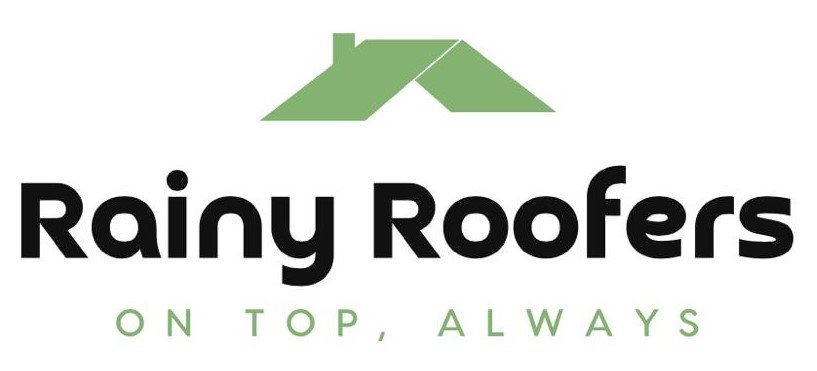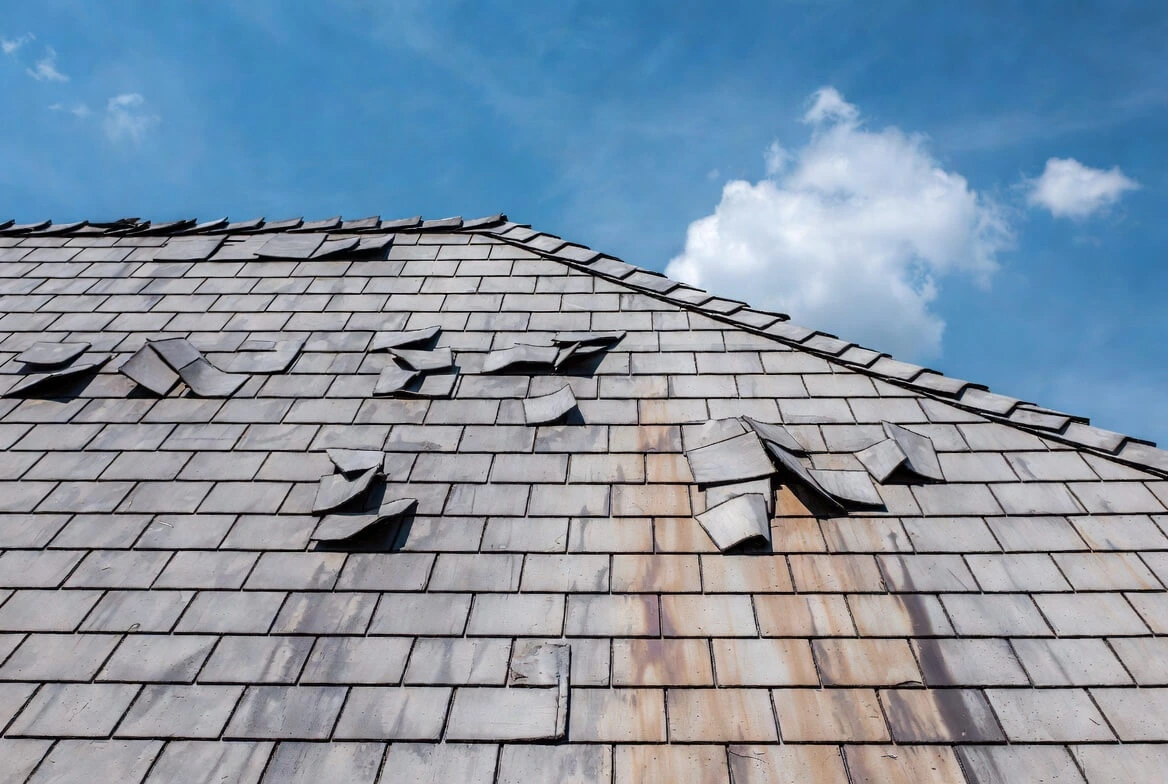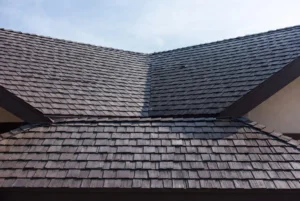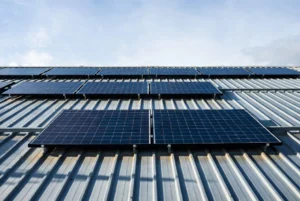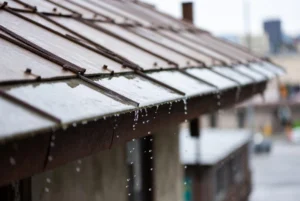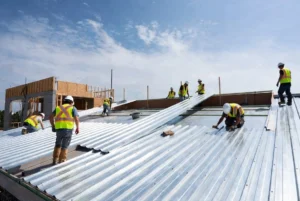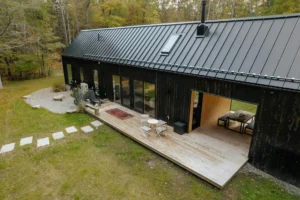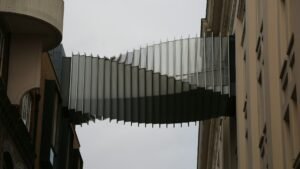You just bought an older home. Great bones, solid price. Then someone mentions the roof might have asbestos shingles. Now you’re panicking. Is your family safe? Will you get cancer? Does this destroy your investment?
I get calls like this constantly at Rainy Roofers. Homeowners discover they’ve got asbestos roof shingles and immediately assume the worst.
Here’s the truth: It’s not as terrifying as you think. But it’s also not something to ignore. Let me walk you through everything you need to know.
What Are Asbestos Roof Shingles?
Asbestos roof shingles were wildly popular from the 1920s through the early 1980s. They mixed asbestos fibers with Portland cement to create roofing that was fireproof, weather-resistant, and incredibly durable.
Builders loved them because they were:
- Affordable and lightweight
- Fire and heat resistant
- Immune to rot and insects
- Long-lasting (often 50+ years)
The problem? Those same asbestos fibers that made them strong can cause serious health issues when they become airborne.
If your home was built or roofed between 1920 and 1986, there’s a real chance you’ve got asbestos roofing materials.
The Real Risk: Asbestos Roof Cancer
Let’s address the elephant in the room.
Yes, asbestos exposure can cause cancer. Specifically mesothelioma, lung cancer, and a chronic condition called asbestosis.
But here’s what most people miss: Intact asbestos shingles aren’t dangerous.
The risk comes when shingles get damaged, deteriorate, or get disturbed during removal. That’s when microscopic fibers become friable (airborne) and can be inhaled.
Once those fibers lodge in your lungs, they can cause damage that shows up 10-50 years later.
Asbestos roof cancer risks increase when:
- Shingles crack, break, or crumble
- Weather damage exposes fibers
- DIY removal disturbs the material
- Renovation work cuts or drills into shingles
The key is keeping those fibers locked in place.

How to Identify Asbestos Roof Shingles
You can’t confirm asbestos through visual inspection alone. Only laboratory testing gives you a definitive answer.
But there are clues that suggest your roof might contain asbestos:
Visual indicators:
- Cement-like texture (not granulated like modern shingles)
- Light to medium gray color
- Rectangular or diamond-shaped
- Thicker and heavier than standard shingles
- Wavy or irregular edges
Other signs:
- Home built between 1920-1986
- Roof hasn’t been replaced since original construction
- Markings from known asbestos manufacturers
If you suspect asbestos, do not take samples yourself. Hire a certified asbestos inspector to collect and test samples safely.
We always recommend a professional roof inspection before any work on older homes.
Should You Remove Asbestos Roof Shingles?
Here’s where most homeowners make expensive mistakes.
Removal should be your last option. Not your first.
The EPA actually prefers that homeowners repair or cover asbestos shingles rather than remove them. Why? Because removal creates the highest risk of fiber release.
Leave asbestos shingles alone if:
- They’re in good condition
- No visible cracks or damage
- Not crumbling or deteriorating
- You’re not planning major renovations
Consider removal if:
- Shingles are severely damaged
- You’re doing extensive remodeling
- Encapsulation isn’t possible
- Local codes require it
I had a customer last year who wanted to tear off his asbestos roof immediately. After inspection, the shingles were solid. We installed a metal roof directly over them instead.
Saved him thousands and eliminated the exposure risk entirely.
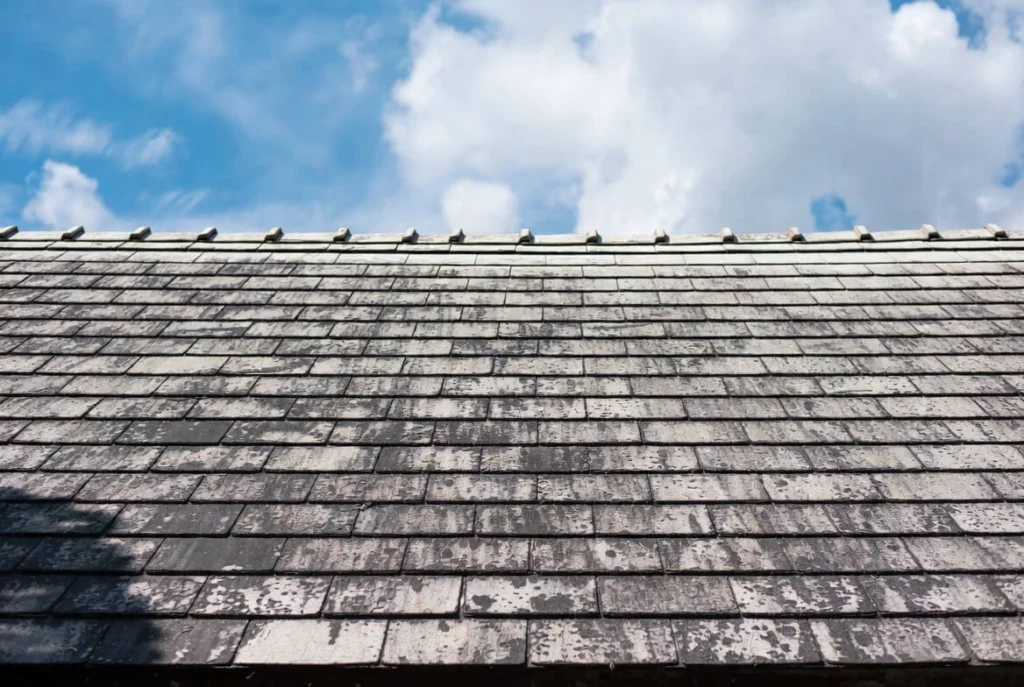
Installing Metal Roofing Over Asbestos Shingles
This is often the smartest solution.
Metal roofing is lightweight and can be installed directly over asbestos shingles without disturbing them. The existing shingles stay encapsulated underneath.
Benefits of this approach:
- No fiber disturbance
- Lower cost than removal
- Faster installation
- New roof protection for 40-60 years
Important considerations:
- Test nail drives first to check for cracking
- Use self-drilling stainless steel screws if shingles crack badly
- Install proper underlayment over asbestos
- Keep shingles slightly moist during installation
- Cut back overhanging shingles carefully
This method keeps asbestos locked in place while giving you a brand new standing seam metal roof or other metal roofing system on top.
Encapsulation: Another Safe Option
If your asbestos shingles are in decent shape but showing minor wear, encapsulation might work.
Encapsulation means applying a sealant coating over the shingles to bind fibers together and prevent them from becoming airborne.
For painting asbestos shingles:
- Start with a good primer to seal cracks
- Use encapsulant paint or high-quality acrylic latex
- This adds protection against weathering
It’s cheaper than removal and keeps everything contained.

When Professional Removal Is Necessary
Sometimes removal is unavoidable. If that’s your situation, never do it yourself.
Professional asbestos abatement costs between $50-$120 per square foot, plus disposal fees. Yes, it’s expensive. But the health risks and legal penalties for improper removal aren’t worth cutting corners.
What certified abatement contractors do:
- Seal off work areas completely
- Wear proper protective equipment
- Keep materials wet to prevent airborne fibers
- Use HEPA vacuums for cleanup
- Double-bag waste in leak-tight containers
- Dispose at licensed asbestos facilities
Your contractor should provide a written work plan and follow all EPA, OSHA, and local regulations.
Cost of Asbestos Roof Shingle Removal
Let’s talk real numbers.
Asbestos roofing removal: $50-$120 per square foot
Asbestos siding removal: $10,500-$13,500 average
1,500 square feet of siding: Around $12,000
These prices don’t include disposal fees or the cost of your new roof.
Compare that to installing metal roofing over existing asbestos shingles, and the math usually favors the overlay approach.
For a detailed breakdown, check our roofing cost guide.
Living with Asbestos Roof Shingles Safely
If removal isn’t in the budget right now, you can live safely with asbestos shingles by following these guidelines:
- Inspect annually for cracks or deterioration
- Never pressure wash the roof
- Don’t walk on it unnecessarily
- Keep gutters clean to prevent water damage
- Document condition with photos yearly
- Hire professionals for any repairs
Undisturbed asbestos poses minimal risk. The danger comes from disturbing it.
Frequently Asked Questions
How do I know if my roof has asbestos shingles?
Check your home’s age first. If built between 1920-1986, there’s a good chance. Look for cement-like texture, gray coloring, and rectangular or diamond shapes. Only lab testing confirms asbestos presence.
Is it safe to live in a house with asbestos roof shingles?
Yes, if shingles are intact and undamaged. Asbestos is only dangerous when fibers become airborne. Regular inspections help you monitor conditions and catch problems early.
Can I remove asbestos shingles myself?
Technically, some states allow homeowner removal. But it’s extremely risky. Improper removal creates serious health hazards and may violate disposal laws. Professional removal is always recommended.
What does asbestos roof removal cost?
Expect $50-$120 per square foot plus disposal fees. A 1,500 square foot roof could run $75,000-$180,000 for full removal and replacement. Installing over existing shingles costs significantly less.
Can I install a new roof over asbestos shingles?
Yes. Metal roofing works especially well for this. The existing shingles stay encapsulated, and you get a new roof without disturbing the asbestos. Have a [roof inspection] to ensure your structure can handle the additional layer.
When were asbestos shingles banned?
The EPA banned most asbestos-containing materials in 1989. However, homes built before the mid-1980s may still have asbestos roofing that’s never been replaced.

The Bottom Line on Asbestos Roof Shingles
Finding asbestos roof shingles doesn’t mean your home is a death trap.
It means you need a plan. If shingles are solid, leave them alone and monitor annually. If they’re deteriorating, explore encapsulation or overlay options before jumping to removal.
Asbestos roof cancer is a real risk, but only when fibers become airborne. Keep them contained, and you keep your family safe.
At Rainy Roofers, we help homeowners navigate asbestos roofing situations every week. Whether you need an inspection, overlay installation, or guidance on next steps, contact us to discuss your options.
Don’t panic. Get informed. Then make a smart decision.
